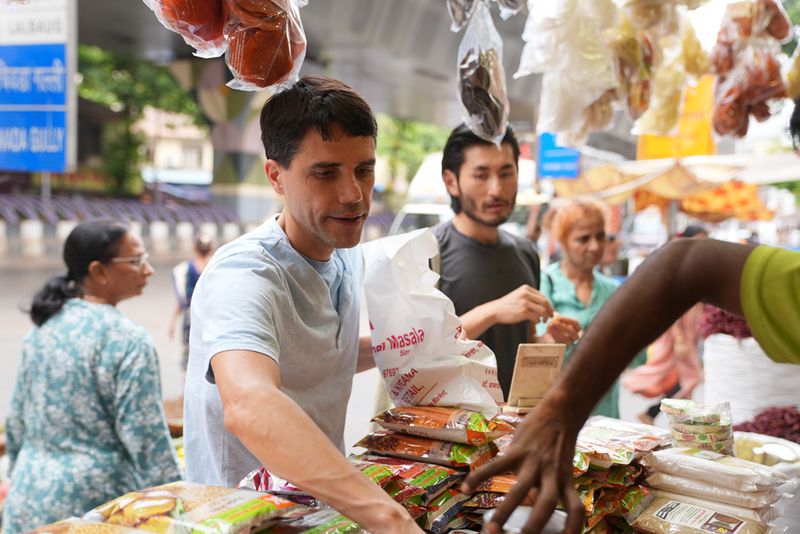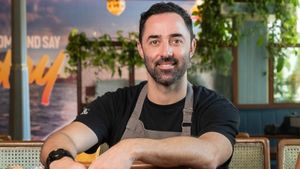In the heart of Peru's vibrant culinary scene, where bold flavours and fiery passion often take centre stage, there's a quiet maestro crafting culinary magic. Meet chef Virgilio Martinez whose restaurant, Central in Lima, was crowned No. 1 in the World's Best Restaurant List just last year. Unlike the fiery theatrics sometimes associated with renowned chefs, he exudes a calm confidence, proving that the most impactful voices aren't always the loudest. On his maiden visit to India, the chef introduced patrons to the diverse flavours of Peru, at a two-day pop-up at The St Regis Mumbai, hosted by the Masters of Marriott Bonvoy and Culinary Culture.
In a chat with Zee Zest, Martinez talks about his food philosophy, what it takes to be number one, his thoughtful approach to cuisine, culinary techniques he’s learned from his grandmother, his deep respect for nature and the secret ingredient that sets Lima's Michelin-starred restaurants apart.
Edited excerpts:
1. What story do you try to tell through your food?
It's about getting closer to nature and finding inspiration. I mean, understanding most of our resources and ingredients that we are expressing in the kitchen is already done. The real genius for a chef is mother nature. We just need to do a clever interpretation of what is happening in nature. So that's a lot to do because, nowadays, there's so much noise in the cities and everywhere, that we are losing our interaction with nature, as human beings also, because of this digital world. What is happening is not bad, but for gastronomic experiences, we got to be more disconnected from our digital environment. And we'll get deeper into nature. So that's why we chefs, we need to work on different levels of disciplines, not only in gastronomy, we got to go beyond gastronomy, through anthropology history, we need to know our regions, we need to know about our culture. There’s a lot to learn.
2. Are there any indigenous ingredients that you find particularly fascinating to cook with?
Mostly, Peruvian medicinal plants because it has a strong connection with the people. Nowadays, the food that we get from the industry is not natural. We go to the pharmacy, for healing, while in nature, we have people who use plants for healing. So I believe it's one of the best examples of how to use plants for other purposes.
3. Are there any chefs who played a significant role in shaping your culinary journey?
Well, I have many mentors in my life, like many, many, many. Starting from my grandfather, my grandmother, and then chefs in Peru. I mean, I have a mentor in my own kitchen.
4. We all dream of making it big. If you could have a chat with your younger self, what nuggets of wisdom would you share about the path to becoming a world-class chef?
Work with determination and discipline is the key. There is no way to do something without discipline, like working hard is something that doesn't have to be painful. You have to train your body and mind to be committed to something that you enjoy, and you love. So make sure that you love what you do, make sure that you have a plan. Because if you have a plan, you have to make a strategy to achieve that thing that you want to do. You have to plan things that are like in the middle of your career to even think about giving a legacy. So make big plans for the long term, but make small plans for the short term. I think that's the best way to get motivation every day because if you are thinking about the long term plan, we shouldn't be the number one restaurant in the world. This is of course, a consequence.
5. While discipline is certainly crucial, what guiding philosophies would you say are essential for a restaurant to achieve the level of success your establishment has achieved?
You have to really open your mind in many ways. For us, like a restaurant that happens to represent a country, a nation, a continent, it represents the hope of our culture and gives us the exposure to new ways of creativity. A restaurant needs to have the power to enforce its identity and make people proud of what we do as Peruvian Americans and as human beings. I think those are big dreams that we've been weaving in the past years. And I think that makes a restaurant special. We're not just thinking about doing special dishes, we are being creative.

6. Does your cooking carry any special traditions or skills you learned from your grandmother's kitchen?
Cooking at low temperature, slow cooking and cooking over three, four or five days. Yeah, this is something that is difficult nowadays because when you go to a restaurant, you have to deliver quickly. But be patient to be organised, and let things happen in its time. So I think that's because you know, normally you see your mother or grandmother with a big pot that has been cooking for days and a piece of something that has been cured for months, maybe. But now you can buy everything, maybe already made and you just have to warm it up. I think that's one of the best lessons because of course, I have lessons on techniques and recipes, for me raising this point is important. And if I asked them for recipes, a recipe is to maintain motivation.
7. Beyond exceptional ingredients and skilled chefs, what makes Lima such a breeding ground for innovative, Michelin-approved restaurants?
Lima is a very vibrant city. It’s a huge melting pot of different cultures where people have a strong culture of foods, where you see huge markets with lots of colours, different influences and natural fusion. It's always been the place in Latin America to go and eat and it's been like that for the past 20 years. So you see people from Mexico, Argentina, Brazil are going to Lima to eat. And I witnessed this because I have a restaurant and I get to speak to my guests and they're like, “Okay, I came here to eat in a restaurant and they go back. I fly for seven hours, eight hours. I go from California to Lima, spend a weekend and go to restaurants". So, this whole thing about gastronomy is evolving. And that's why there's a lot of work and responsibility for chefs and all the people that are involved in these wars of gastronomy. And also, what happens in Lima is not only about food, because food is huge. It’s also about opening new windows for artists, ceramics, historians, because everybody now wants a story to be told in a restaurant. Lima has a lot of style. Now, that's why Lima, and a lot of other restaurants that have made it to the list.



